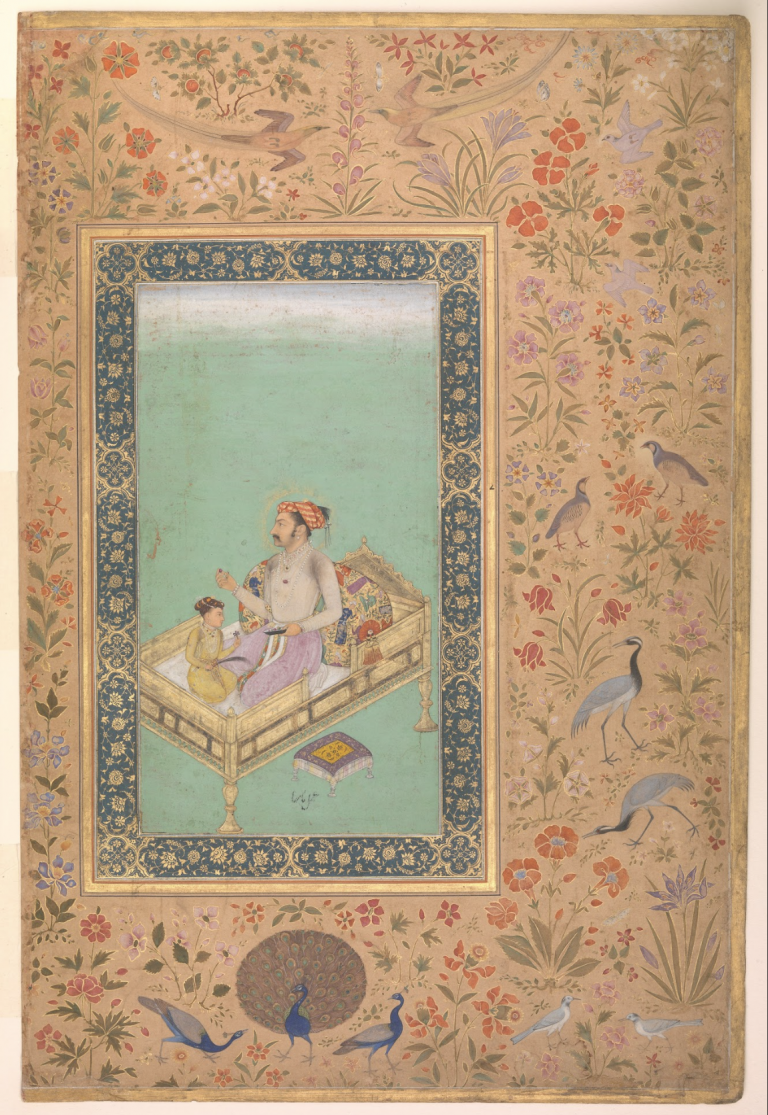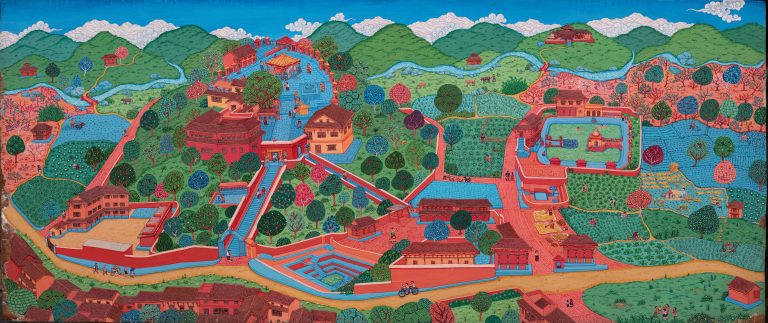Introduction Text by Suruchi Khubchandani
Reversing the debate of ‘cultural subversion’ and instances of derivations of non-western artist from international avant-garde, Bhabani Churn Law in the article ‘The Place of Art in Indian Industry’ published in Art in Industry Annual in 1942, applauds the revival of such objects of Indian art in ‘Art in Industry’ exhibition that have been a source of inspiration and reverence to masses and business community of the west. An article in the Journal of Indian Art1 was probably the earliest to refer to the growing interest among European residents in Indian handicrafts such as decorated metals. ‘Art in Industry’ was a series of an independent exhibitions held annually by the Art in Industry Journal published from Calcutta. BC Law in capacity of an art connoisseur and artist from Calcutta played an active role in supporting and furthering the cause of Indian art through these exhibitions where people were invited to participate. Underscoring a strong and beneficial correlation of art with the industry, BC Law articulates in a simple and lucid manner, the change machine age and economics of mass production brought to the artistic taste of the people along with pattern of consumption of aesthetic products. This was a phenomenon Law said had affected both the European as well as the Indian economy. In this wake, such exhibitions that focused on revival of good design and aesthetic elements in the industrial products of nation as well as traditional handicrafts objects aimed not only in inculcating a sense of beauty in perception of art in the wider masses but also situating the role of artist in the society as well as economics of the country at a time when India was struggling to negotiate its own notion of modernity and progress.

1 J.L. Kipling, Brass and Copper Ware of the Punjab and Kashmir, Journal of Indian Art (and Industry), 1886.
Bhabani Churn Law: The Place of Art in Indian Industry
Art in Industry Annual, 1942
As one keenly interested not merely as an artist and an art lover but as a citizen of this great country of ours in the aims and methods of the Art in Industry Exhibition, I have been connected with and have tried to help this movement ever since its inception. I believe such exhibitions, if widely encouraged and considerably developed, can become of the most profound national importance. That is the underlying reason why no obstacles and no difficulties – not even the wars which is at our door – could discourage its sponsors and induce them to abandon the idea of holding the exhibition in these critical days.

There was a time when India achieved such distinction in the production of a rich variety of the most beautiful objects that Indian industrial arts gained a world-wide reputation. The people of Europe priced the wares of India – the silk brocades, the muslins of Dacca, the printed cottons, the shawls and carpets, enamelled and gem-set jewellery and many other articles – not merely for their utility but also for their artistic beauty. In those days in this land the people and the skilled craftsmen, who satisfied their requirements and tastes, possessed a fine sense of the importance of beauty and fitness, which they displayed in their homes, alike in articles of luxury and of everyday life.
Beautifully designed and made and ornamented with lovely floral or other patterns suggested by nature’s form, they fulfilled a utilitarian purpose and at the same time were things of beauty to look at. They created an atmosphere of brightness and joy. Those were the days when Indian craftsmanship, originality and technical execution were unexcelled. Indian goods even set the fashion in Europe and Indian arts were the envy of its best craftsmen. Indian filigree work inspired the jewellers of Venice and her printed cottons the textile workers of France, and (unfortunately), her shawls were copied by the manufacturers of Paisley.
Great Change
Now we come to the machine age and mass production, when a great change took place everywhere. As in England in the beginnings of the new age there was an appalling era of industry divorced from true art, though of false art, of over decoration, archaism and disguise there was plenty, so in India the artistic taste of the people has steadily deteriorated and many beautiful crafts have decayed or are fast dying out. Quantity and cheapness seem to be the only aims and quality and fitness of very minor importance. At such a time what can be of greater importance than the encouragement of good design and right decoration (such decoration may consist of even simple, clean lines) in general the improvement of the aesthetic qualities of our industrial products, not only of handmade articles but also, and chiefly, of the products of large scale manufacturers?

A time must come, and let us hope it will come soon after the war, when it will be possible to demonstrate in such exhibitions of art in industry as ours a high level of artistic achievement, not in some special or severely restricted spheres as at presentbut in the whole range of industry, for the element of beauty has a place of its own everywhere. A fuller recognition of such artistic achievement will have the most beneficial and stimulating effect on the publictaste and will bring new joy to our homes. A wider demand will result in a brighter future in our industries. At the same time the artist will become a more important factor than he is now admitted to be in this country, for he is indispensable not merely for the purposes of the advertisement and display. In industrial production many new fields for works need him and need him most urgently. The distrust of art and that good design does not pay are old beliefs which have been slowly but surely undermined. Beautiful shape, fitting design and joyful colouring – all these the trained artist can create and create in such manner as to satisfy the needs and tastes of the times. The practical industrialist of to-day will readily acknowledge what an asset such an artist would be for the expansion of industry for everywhere efficient production with beauty is what should be aimed at. Thus, the co-operation of the industry with art will prove of incalculable and abiding value to our country.
Mr. B.C. Law is an aristocrat to his fingertips belonging as he does to the well-known Law family of Calcutta. He is a distinguished artist, a great connoisseur and patron of art, who has done much to further the cause of art in India; no struggling artist of merit ever failed to arouse his sympathy and patronage. His contribution on art in various journals in India always arrest attention. Right from its very beginning Mr. Law gave his encouragement and support to the “Art in Industry” exhibition and his name will always be associated with this venture.
Article Courtesy: Sanjeet Chowdhury.













